:: What is Digital Storytelling? ::
Digital storytelling is hard to define, with no single accepted description. According to the university of Wollongong the distinction between digital storytelling and non-digital is achieved by using a variety of digital elements to tell a story. This serves mostly to distinguish the format from a more traditional storytelling such as novel writing, but does a written story become digital once scanned into a pdf format?
‘A digital story is a multimedia presentation combining a variety of digital elements within a narrative structure‘
University of Wollongong (n.d.)
There are countless different ways to tell a digital story, each with there own unique format. As I hope to develop as a 3D Environment artist post university I am going to focus on how I can tell a story visually within an environment. This, while being something I have explored a little in my personal work previously, is something I would very much benefit from developing.
:: What is Environmental Storytelling? ::
A large part of being a professional environment artist is being able to convey a story through visuals alone. This method of storytelling can be seen across titles from every genre. A lot of environmental storytelling is done through the texturing of the spaces, however I will be looking at crafting a story through every stage of the asset creation pipeline.
‘Environmental storytelling is the art of arranging a careful selection of the objects available in a game world so that they suggest a story to the player who sees them.’
Stewart,B (2015) [Game Developer.com]
Almost all open world games try to tell stories within their environments in order to add visual appeal and breathe life into there game worlds. I will show some examples from a variety of game genres, each telling there own very distinct stories and show how they use their environment to show the narratives they have created. I then hope to apply some of the principles shown in these environment to my own work.
:: Days Gone ::
Horror games such as ‘Days Gone’ or ‘The Last of Us’ tend to lend themselves well to environmental storytelling. Likely due to the stories shown, such as the one below, being very easy to understand even when just told visually. Post-apocalyptic scenes naturally allow you to show more obvious visual stories. When seeing an city overgrown, or houses blood stained and desolate the player is immediately brought into the setting. Allowing the scene to tell a very clear story efficiently.
There would be many benefits to setting my scene in a post-apocalyptic world. One, it is a very popular setting for video games so would likely boost my portfolio. It would also allow me to play around with natural texturing, and I have the creative freedom to model my environment after almost anything so long as it is then overgrown.


For example, I could use the ‘Days Gone’ example above and try to tell a story of people trying to flee the apocalypse. Perhaps instead of people trying to escape via car and being stuck at the border I could model the interior of a shipping container, telling the story of a family who escaped to boats. Though perhaps the zombies also made it to the ships before they left port.
However, I do find post-apocalyptic scenes a little dull after seeing so many of them in video games. I would perhaps like to model a slightly more original scene. I would also like to tell a more complicated story than just another tragic zombie ending.
:: Watch Dogs: Legion ::
Watch Dogs: Legion is set in a London of the very near future. Where an oppressive military force has taken over the city following a terrorist attack. This area of the map hosts a bomb site and uses a limited number of assets to tell a story of a society held in shared grief. We see piles of flowers and candles lining the street, along with photographs of loved ones lining the walls (Ref.3).
A nice touch with this environment is the behaviour of the AI. Where pedestrians will walk along the area and comfort each other as they look to the images of people lost in the bombing (Ref.4). This environment goes a long way in establishing the setting of the game visually and justifies how an oppressive military force was able to infiltrate London. Reminding the player of the games story each time they walk past the area.
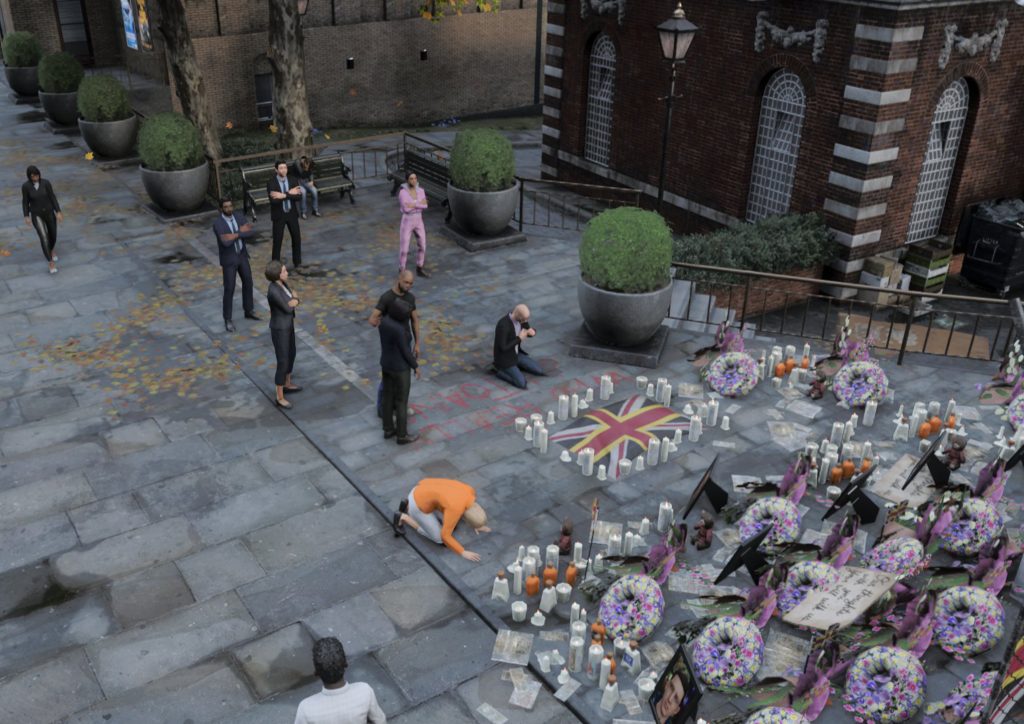


I like the graffiti in this environment, giving a sense of realism. You have the more artful murals, with more political statements sprayed over the top (Ref.5). Showing the changing of attitude amongst the people of London as time progressed following the bombing.
I really like this environment and find the story it tells intriguing. It also shows how I could use a limited number of assets with clever placement and randomness to bulk out a scene and give the environment a lived-in appearance. The downside with this environment, is a lot of the atmosphere created and the story told is due to the AI behaviour, something I won’t be implementing in my still environment piece. I could however have some kind of movement in the renders, for example if whatever environment I create is abandoned I could have dust effects showing the stillness of the scene.
:: Mafia: Definitive Edition ::
Being a historical game, the Mafia titles have more restrictions with their environments than the previous games discussed. Yet even in that authenticity focused world the designers are still able to tell stories in small spaces. Though these areas do tend to be more about placing questions in the audiences’ heads than telling a complete story with an ending such as the ‘Days Gone’ example or setting the stage for the game’s direct narrative such as the ‘Watch Dogs: Legion’ example.
The stories told in the environments of the game are historically authentic, which is key to not removing the audience from the overall world created. For example, we see boarded up buildings when moving away from the street fronts (Ref.6) along with posters on the walls calling for worker strikes. The player could see these things as connected or not, just as they could see the white door in the middle of the large wall poster as an oddity, being halfway up the wall with no walkway to it. But perhaps its not a door at all? Perhaps it’s a boarded in window, if so, you must wonder why the window is filled in. Maybe someone had a mishap before the glass was covered.
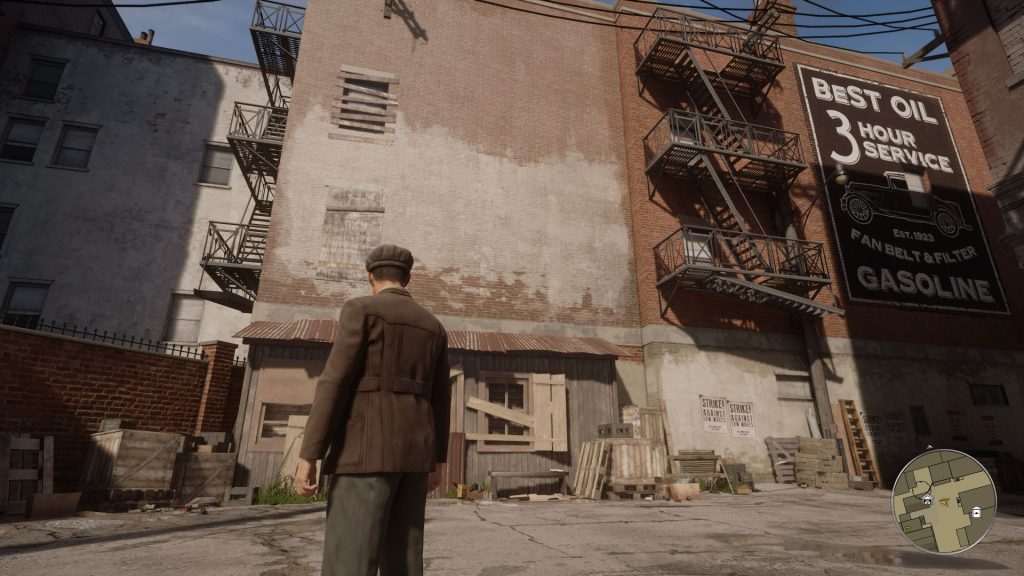

You can also see examples of environmental storytelling which is a result of the games main narrative. As in the Chinatown section of the game you can see large construction filling the roads (Ref.7). Which is a result of a gang attack the player has fought previously. It also just helps to make the world feel lived in and less static to the player when they see how there actions impact the universe. I don’t believe this construction ever disappears, but it is convincing enough for the player to believe it would. We can also see a boarded-up distillery. Which not only contrasts to the reds and yellows of the Chinatown district in which the building sits but also hints at the prohibition era time we are playing in.
These are nice environments, and I like the more question-based stories they tell. However, I do think that they are perhaps a little too vague for me to try to emulate in my own environment. For my piece I think it probably wise to show a more obvious story in the setting to make whatever story I tell as clear as possible for the audience.
:: Batman: Arkham City ::
The ‘Batman: Arkham’ games have a huge world of lore they can pull from in order to craft various environmental stories (Rocksteady, 2011). With such a colourful cast of characters to pull from, there is ample opportunity for digital stories to be told separate and aside from the main games narrative.
Here (Fig.8), the player can see that something has happened that has caused catastrophic damage to a hotel building. Thick vines surround and protrude from the building, damaging the surrounding area of the street. This is a nod to the character of ‘Poison Ivy’, a Batman villain who has claimed the hotel as her base. Showing the characters desire to be left alone and her willingness to act violently in that desire.
The player is likely to want to explore this area as the location stands out from its surroundings and through its digital storytelling, makes the player question what is inside the building.


This church building (Ref.9) is a location the player visits throughout the game, and the environmental story told changes each visit. The burning roof is from a story event involving a bomb, and the banners appeared later. However, the story being told in this image doesn’t show that timeline. To someone just seeing the screenshot, they will see the green question mark banners and burning roof as connected. I find the idea of different perspectives being able to tell different stories when seeing the same image fascinating and would love to incorporate that aspect into whatever environment I create.
:: Previous attempts at Visual Storytelling ::
I have attempted to tell stories with my 3D artwork before, whether that be by trying to make a historical tank look like it has seen combat through damage and dirt (Fig.1 & 2). Making a post-apocalyptic gun try to tell a story of loss (Fig.3 & 4) or showing an old car as having been used (Fig.5 & 6).
However, I would say that none of these pieces really manage to convey a convincing digital story. Both vehicles stories fall flat, appearing to be dirty in an attempt at realism rather than showing the vehicles history. With the teddy bear I feel like you could put forward a narrative for it, but I don’t think the gun tells the same story as the teddy bear beneath it does. Which makes the two assets feel disjointed from each other.
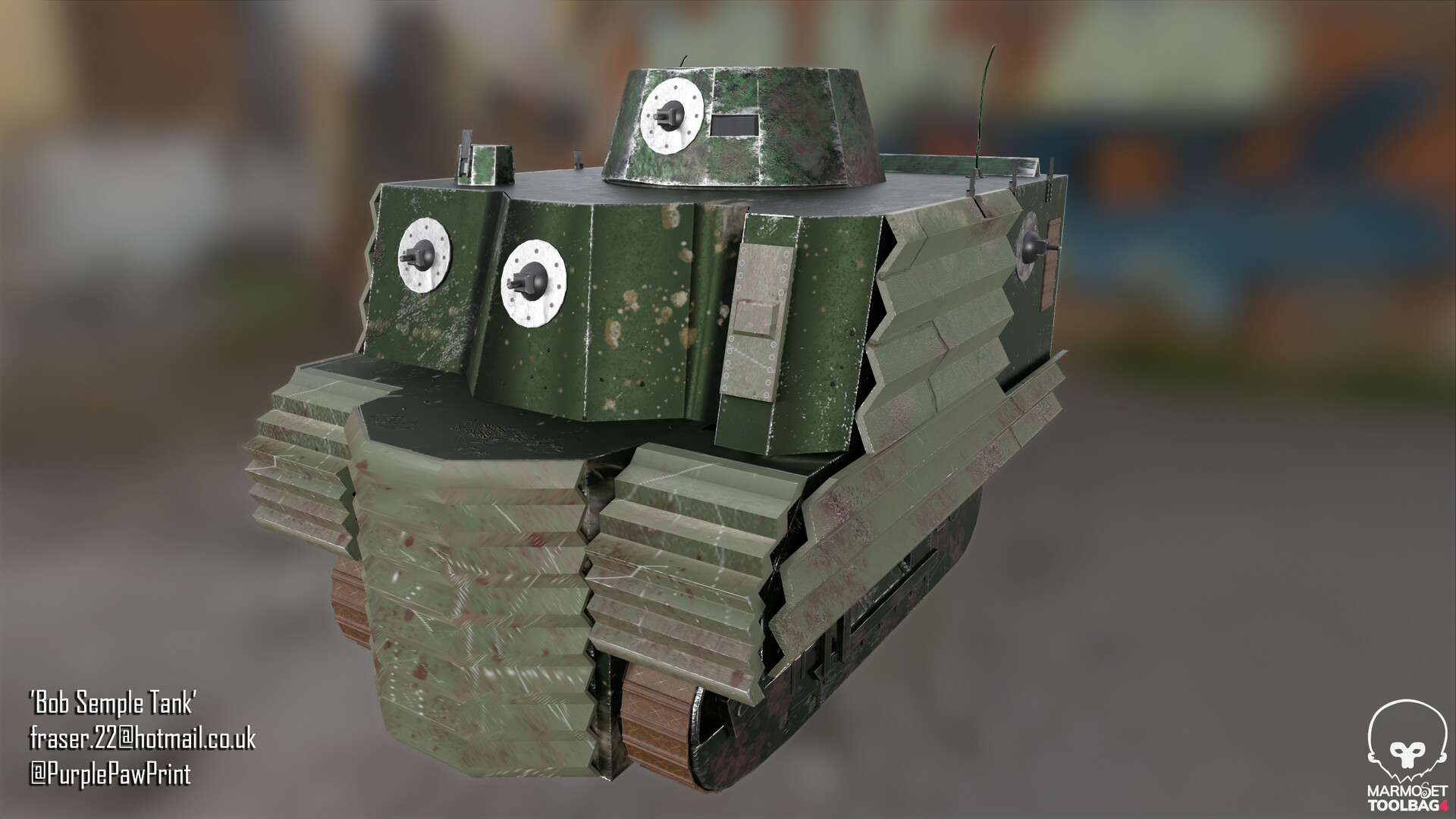
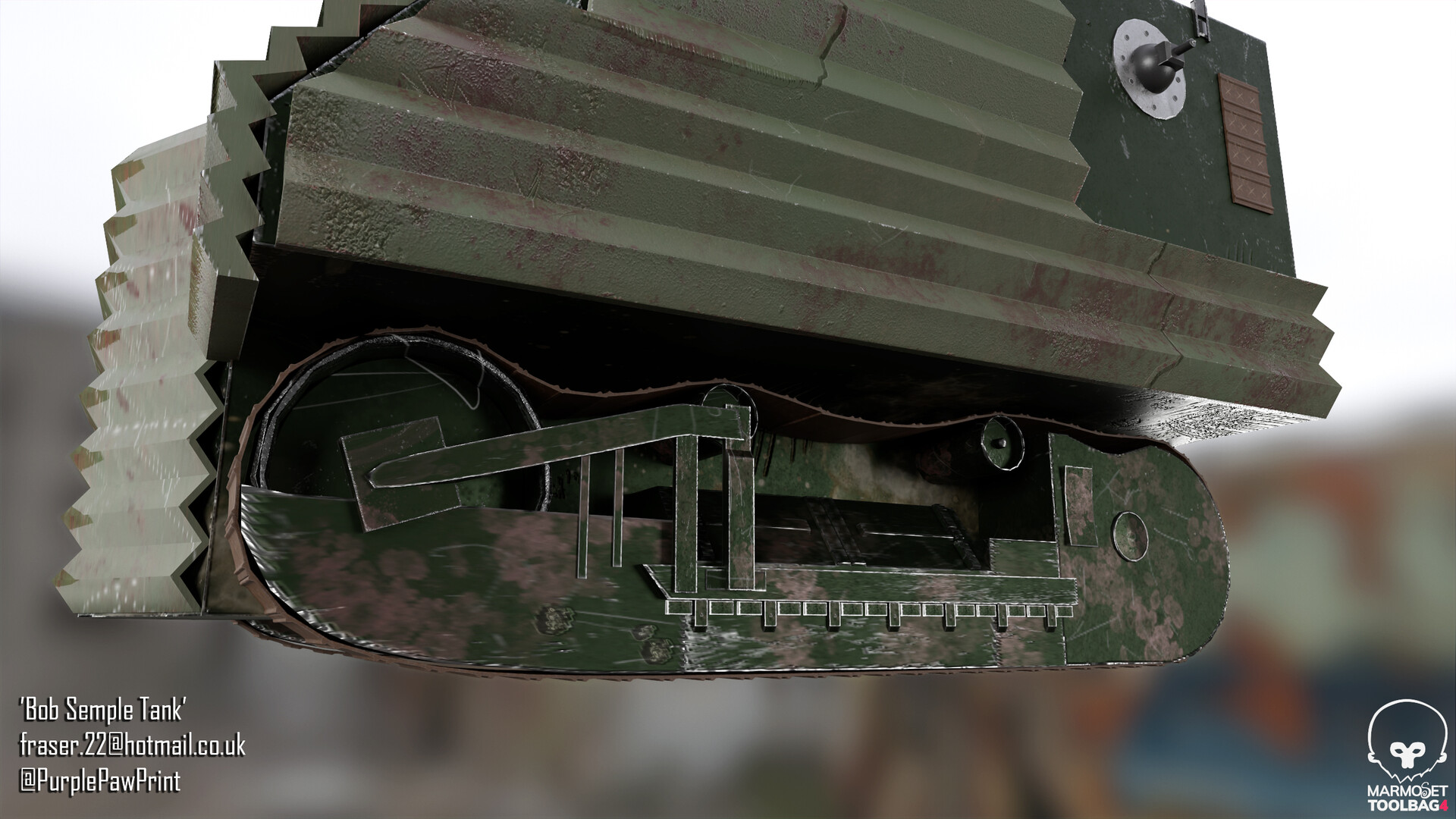
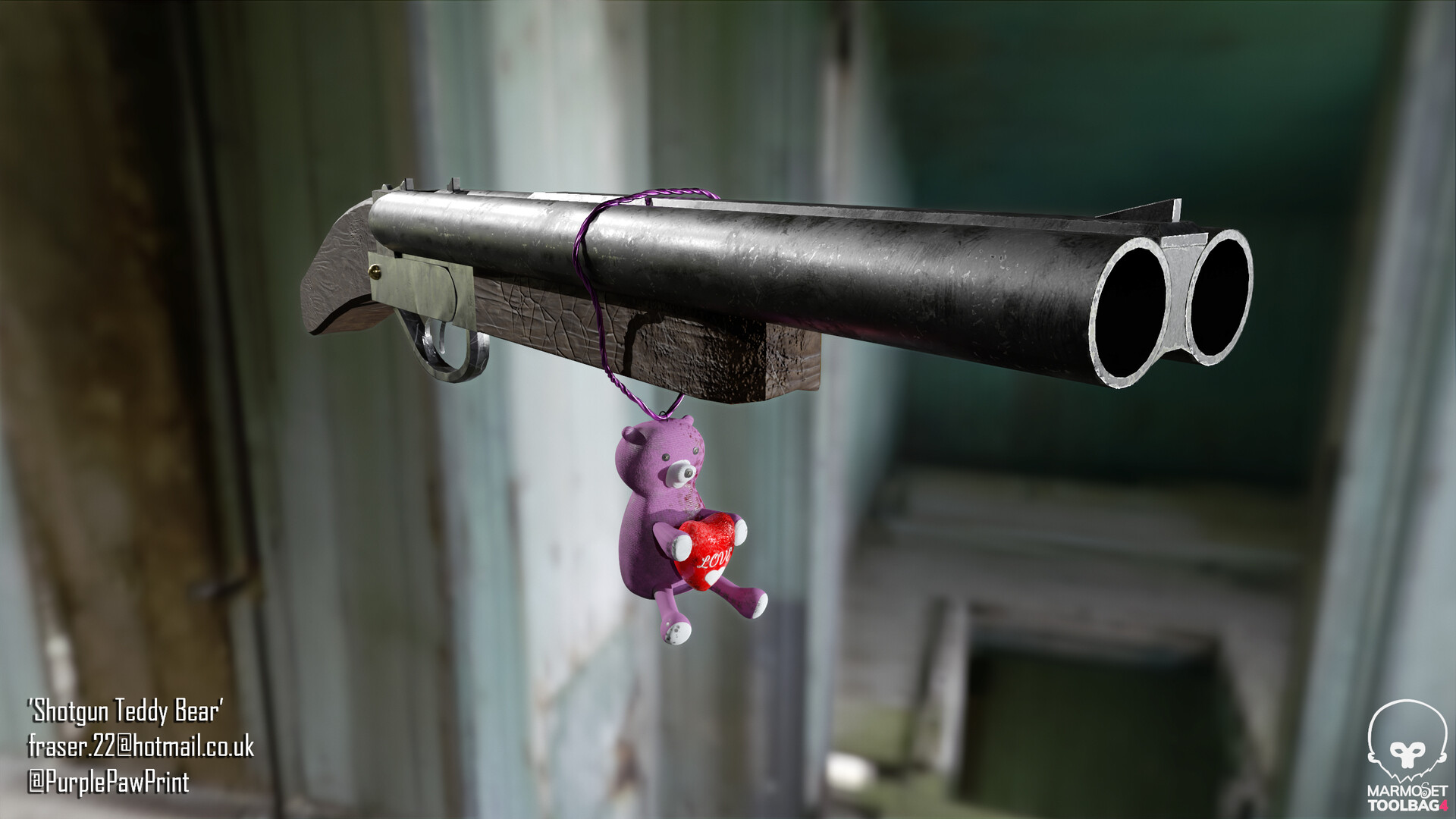



I won’t be creating a single prop for this assignment but rather an entire environment, and these experiences can tell me a lot about what I need to alter with my assets to create an environment wide digital story the viewer can discern. All the assets in the environment must work together to tell a cohesive story, unlike with the shotgun asset I previously made. I also need to make sure I don’t confuse simply adding age to the environment through dirt and mud as telling a digital story. Something I have arguably done with my other pieces.
:: References ::
2K Games (2020). ‘Mafia: Definitive Edition’ [Video Game]. Available online: https://store.steampowered.com/app/1030840/Mafia_Definitive_Edition/ [Accessed 27/09/2022]
Bend Studios (2020). ‘Days Gone’ [Video Game]. Available online: https://store.steampowered.com/app/1259420/Days_Gone/ [Accessed 27/09/2022]
Rocksteady Studios (2011). ‘Batman: Arkham City – Game of the Year Edition’ [Video Game]. Available online: https://store.steampowered.com/app/200260/Batman_Arkham_City__Game_of_the_Year_Edition/ [Accessed 28/09/2022]
Stewart, B (2015). [Game Devloper.com]. ‘Environmental Storytelling’ [Online Article]. Available online: https://www.gamedeveloper.com/design/environmental-storytelling [Accessed 28/09/2022]
Ubisoft (2020). ‘Watch Dogs: Legion’ [Video Game]. Available online: https://www.ubisoft.com/en-gb/game/watch-dogs/legion [Accessed 27/09/2022]
University of Wollongong Australia (n.d.) ‘Digital Storytelling’. Available online: https://www.uow.edu.au/student/learning-co-op/assessments/digital-storytelling/ [Accessed 28/09/2022]